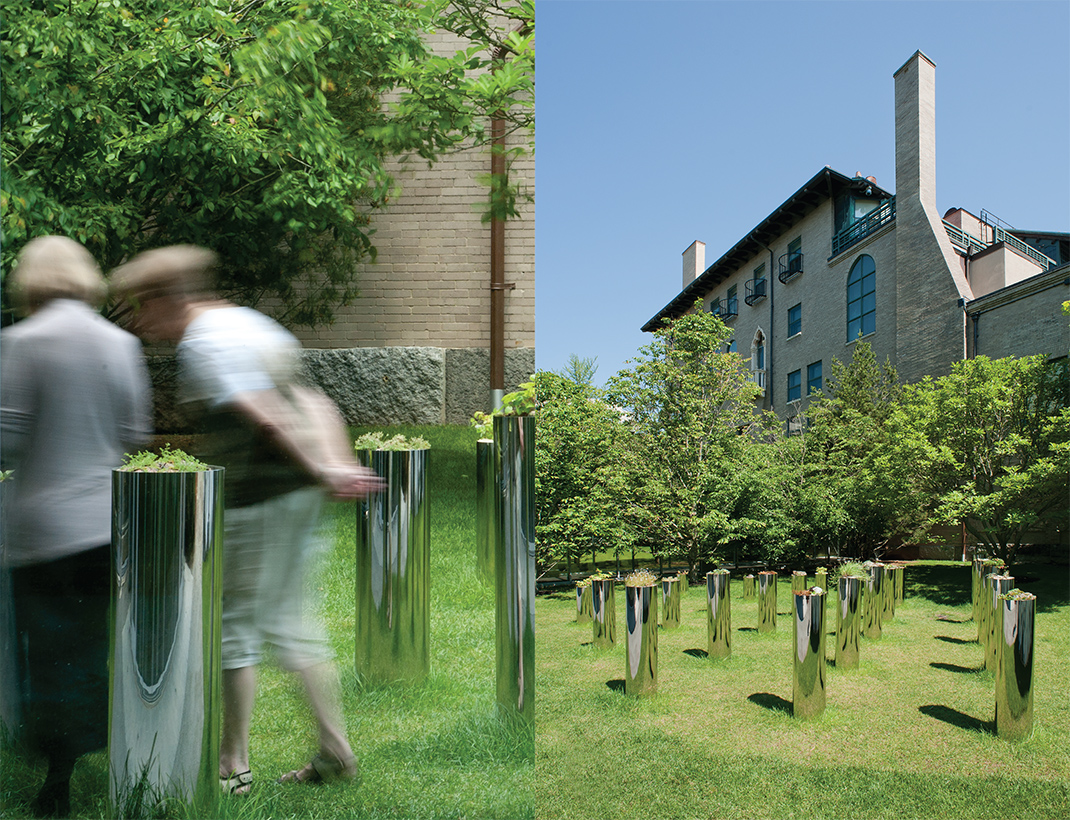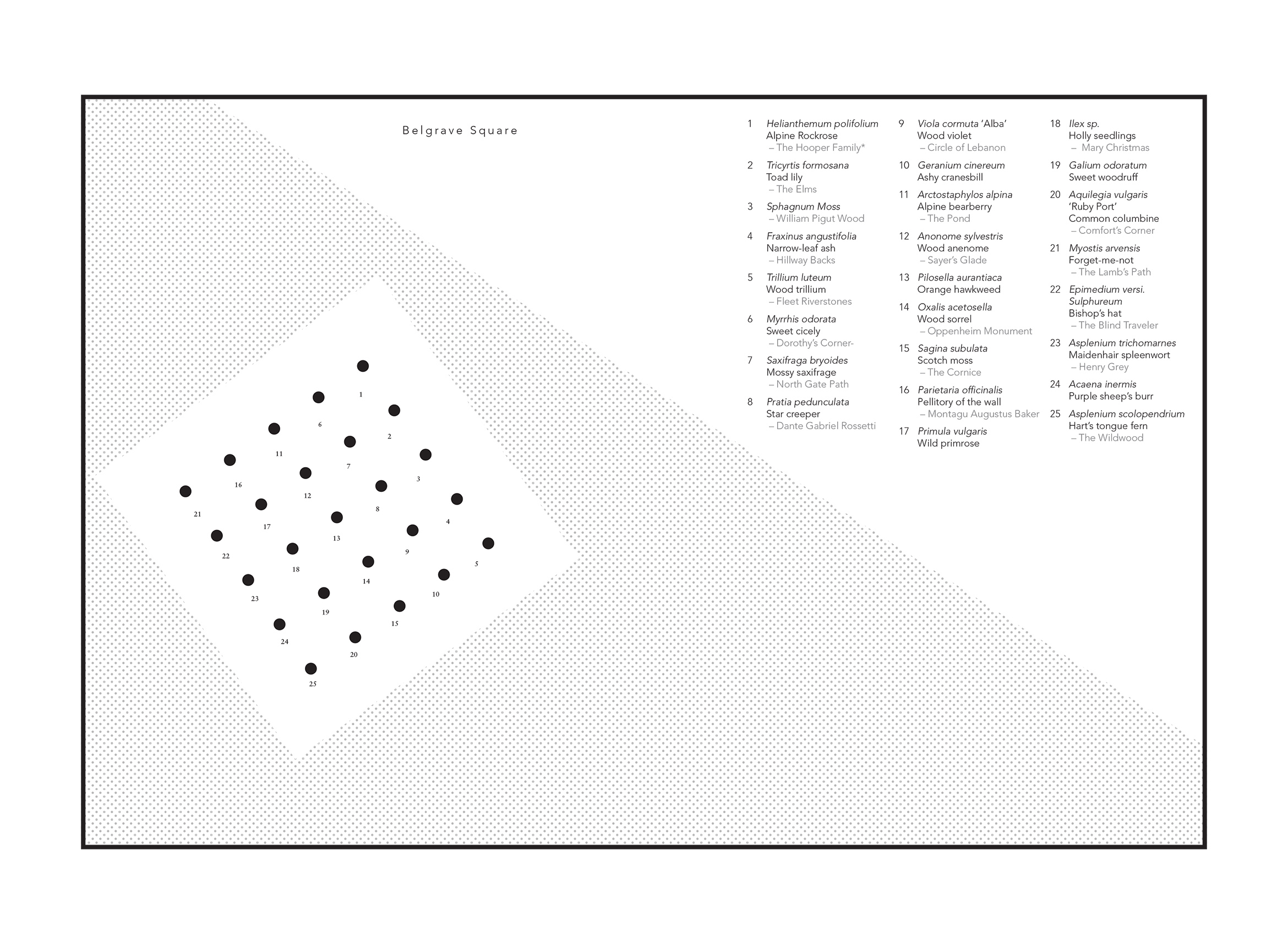Tiny Taxonomy
Les Jardins de Métis, Québec, Canada
Isabella Stewart Gardner Museum, Boston, USA
Belgrave Square in London, UK
Three gardens reveal the role of individual plants in landscape architecture.
Read: Tiny Taxonomy (Actor)

Tiny Taxonomy is a little garden with big ambitions. As both a form of practice and of research, the project suggests the necessary expansion of planting design within the field of landscape architecture. In particular, it exemplifies the use of plants as a scalable unit within an ecological sequence, examining the role of individual species. Tiny Taxonomy is offered on three grounds; a first iteration underscores fieldwork at Les Jardins de Métis, a consideration on collecting at the Isabella Stewart Gardner Museum, and a project of transplanting at Belgrave Square in London. Tiny Taxonomy is therefore a workshop and a garden, examining plants as the primary structure of design and categorization as a creative endeavor. As a series of first-hand experiences, the project suggests that ground-level research and the science of botany can be brought into practice, within a unique landscape architectural agenda.
Tiny Taxonomy showcases species that are in cultivation or in profusion, but rarely purposefully planted. A grouping of plants is categorized by common traits derived from an evolution towards feature miniaturization, generating another form of classification. Due to the diminutive size of their features, these plants are often over-looked and therefore tend to be under specified. It seems that as the world around us gains complexity and intricacy, our biological world is tending towards monotony. As our experiences become more and more uniform, our capacity to apprehend transformation and beauty diminishes. Tiny Taxonomy considers smallness a design opportunity, offering innumerable microcosmic considerations of the leaf form, flower structure, and physical habitat of individual plants.
Garden Installation & Design, Build, Plant, Install
Les Jardins de Métis, Québec, Canada
2010–2015








Garden Installation & Design, Build, Plant, Install
Isabella Stewart Gardner Museum
Boston, USA
Charles Waldheim, Curator
2013










Garden Installation & Design, Build, Plant, Install
Funded by Grosvenor Estates UK
Minister of Culture, Québec
Installed at Belgrave Square
Plants Collected in Highgate Cementery
Tim Richardson, Curator
2014










